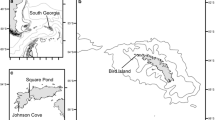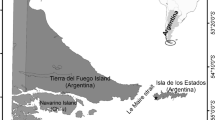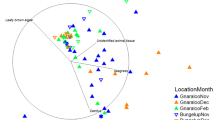Abstract
Colonial-nesting waterbirds such as ibis and spoonbills (Threskiornithidae) can account for a significant proportion of energy flow through wetlands, particularly during large breeding events. However when food availability is reduced, chicks may starve and adults may abandon nests. If the energy required to rear chicks could be calculated, data quantifying prey energy value and availability could be used to develop landscape scale management targets to ensure that food requirements are met to support chicks until they attain independence, thereby maximising recruitment. We calculated ibis and spoonbill chick biometrics and energy requirements through (a) an international literature review, extracting and synthesising the best available growth and energy data; (b) new measurements of ibis and spoonbill chick biometrics for selected species; and (c) analysis of the resulting databases to construct growth curves and predict energy requirements for selected species. Here we present the first models of Royal Spoonbill growth and of Royal Spoonbill and Australian White Ibis chick energy requirements. The total energy estimated to raise a single Royal Spoonbill chick from hatching to independence was 71,290 kJ and for an Australian White Ibis chick was 67,160 kJ. Using prey energy values from the literature, extrapolations indicate that for either species, a nesting event of 1000 nests producing three chicks per nest would require an estimated ten tonnes of freshwater crayfish (Cherax destructor) or eight tonnes of invasive juvenile carp (Cyprinus carpio) to support chicks from hatching to independence. Effective water and wetland management is critical to optimise both energy availability in foraging sites and breeding success.






Similar content being viewed by others
References
Archibald GW, Lantis SD, Lantis LR, Munetchika I (1980) Endangered ibises Threskiornithinae: their future in the wild and in captivity. Int Zoo Yearb 20:6–17
Babbitt GA, Frederick PC (2007) Selection for sexual bill dimorphism in ibises: an evaluation of hypotheses. Waterbirds 30:199–206. https://doi.org/10.1675/1524-4695(2007)30%5b199:sfsbdi%5d2.0.co;2
Bairlein F et al (2015) Energy expenditure and metabolic changes of free-flying migrating northern bald ibis. PLoS ONE 10:e0134433
Barker R, Vestjens W (1989) The food of Australian birds, vol 1: non-passerines. CSIRO, Melbourne.
Baynard OE (1913) Home life of the glossy Ibis (Plegadis autumnolis Linn.). Wilson Bull 25:103–117
Bildstein KL (1987) energetic consequences of sexual size dimorphism in White Ibises (Eudocimus albus). Auk 104:771–775
Brandis K (2010) Colonial waterbird breeding in Australia: wetlands, water requirements and environmental flows. University of NSW, Sydney
Brandis KJ, Kingsford RT, Ren S, Ramp D (2011) Crisis water management and Ibis breeding at Narran Lakes in Arid Australia. Environ Manag 48:489–498. https://doi.org/10.1007/s00267-011-9705-5
Butler PJ, Green JA, Boyd I, Speakman J (2004) Measuring metabolic rate in the field: the pros and cons of the doubly labelled water and heart rate methods. Funct Ecol 18:168–183
Calder WA (1984) Size, function, and life history. Courier Corporation, North Chelmsford
CEE (Collaboration for Environmental Evidence) (2018) Guidelines and standards for evidence synthesis in environmental management, version 5.0. http://www.environmentalevidence.org/information-for-authors. Accessed 20 Feb 2019
Cornioley T, Jenouvrier S, Börger L, Weimerskirch H, Ozgul A (2017) Fathers matter: male body mass affects life-history traits in a size-dimorphic seabird. The Royal Society, London
Dementiev G, Gladkov N (1951) Ptitsy Sovetskogo soyuza [Birds of the Soviet Union], vol 2. Sovetskaya Nauka, Moscow
Elliott KH et al (2014) Age-related variation in energy expenditure in a long-lived bird within the envelope of an energy ceiling. J Anim Ecol 83:136–146. https://doi.org/10.1111/1365-2656.12126
Figuerola J et al (2006) Sex determination in glossy ibis chicks based on morphological characters. Ardeola 53:229–235
Fort J, Porter WP, Gremillet D (2011) Energetic modelling: a comparison of the different approaches used in seabirds. Comp Biochem Physiol 158:358–365. https://doi.org/10.1016/j.cbpa.2010.05.004
Fuchs DV, Berrios VS, Montalti D (2017) Morphometric differences between sexes in the White-Faced Ibis (Plegadis chihi). Wilson J Ornithol 129:317–322
Garrett KC (1996) Nesting ecology of the White-Faced Ibis (Plegadis chihi) in Southwestern Louisiana
Hancock J, Kushlan JA, Kahl MP (1992) Storks, ibises and spoonbills of the world. A&C Black, London
Heinitz MC, Figueiredo Silva C, Schulz C, Lemme A (2018) The effect of varying dietary digestible protein and digestible non-protein energy sources on growth, nutrient utilization efficiencies and body composition of carp (Cyprinus carpio) evaluated with a two-factorial central composite study design. Aquac Nutr 24:723–740. https://doi.org/10.1111/anu.12601
Herring G, Cook MI, Gawlik DE, Call EM (2011) Food availability is expressed through physiological stress indicators in nestling white ibis: a food supplementation experiment. Funct Ecol 25:682–690
Jenkins KM, Brandis K, Kingsford R, Davies JN, Wolfenden B (2009) Waterbird diet, foraging and food analysis: Narran Lakes ibis breeding event 2008
Jones PL, De Silva SS, Mitchell BD (1996) Effect of dietary protein content on growth performance, feed utilization and carcass composition in the Australian freshwater crayfish, Cherax albidus Clark and Cherax destructor Clark (Decapoda, Parastacidae). Aquac Nutr 2:141–150. https://doi.org/10.1111/j.1365-2095.1996.tb00053.x
Jong-Ryol C, Tsuchiya I, Sugita H (1999) Captive breeding of Black-faced Spoonbills. Conservation and research of Black-Faced Spoonbills and their habitats. Wild Bird Society of Japan, Tokyo
Kale HW (1965) Ecology and Bioenergetics of the Long-billed Marsh Wren” Telmatodytes Palustris Griseus”(Brewster) in Georgia Salt Marshes. [Nuttall Ornithological] Club,
Kendeigh SC (1970) Energy requirements for existence in relation to size of bird. Condor 72:60–65
Kingsford RT, Auld KM (2005) Waterbird breeding and environmental flow management in the Macquarie Marshes, arid Australia River. Res Appl 21:187–200
Kingsford RT, Norman FI (2002) Australian waterbirds—products of the continent’s ecology. Emu 102:47–69
Kingsford RT, Bino G, Porter JL, Brandis K (2013) Waterbird communities in the Murray-Darling Basin (1983–2012). Report to Murray-Darling Basin Authority. Australian Wetlands, Rivers and Landscapes Centre, University of New South Wales
Kopij G (1999) Breeding ecology of the Sacred Ibis Threskiornis aethiopicus in the Free State, South Africa. S Afr J Wildl Res 29:25–30
Kopij G, Kok OB, Nuttall RJ (2000) Breeding cycle of the Southern Bald Ibis, Geronticus calvus. Ostrich 71:393–399. https://doi.org/10.1080/00306525.2000.9639838
Kushlan JA (1977a) Population energetics of the American White Ibis. Auk 94:114–122
Kushlan JA (1977b) Differential growth of body parts in the White Ibis. Auk 94:164–167
Kushlan JA (1977c) Growth energetics of the White Ibis. Condor 79:31–36. https://doi.org/10.2307/1367527
Kushlan JA (1977d) Sexual dimorphism in the White Ibis The. Wilson Bull 89:92–98
Lok T, Overdijk O, Piersma T (2014) Interpreting variation in growth of Eurasian Spoonbill chicks: disentangling the effects of age, sex and environment. Ardea 102:181–U196. https://doi.org/10.5253/arde.v102i2.a8
Lorenz JJ (2014) The relationship between water level, prey availability and reproductive success in roseate spoonbills foraging in a seasonally-flooded wetland while nesting in Florida Bay. Wetlands 34:S201–S211. https://doi.org/10.1007/s13157-012-0364-y
Marchant S, Higgins P (1990) Handbook of Australian, New Zealand and Antarctic birds. Vol. 1: Ratites to ducks. Oxford University Press, Melbourne
Miller LM, Burger J (1978) Factors affecting nesting success of the Glossy Ibis. Auk 95:353–361
Motulsky H, Christopoulos A (2004) Fitting models to biological data using linear and nonlinear regression: a practical guide to curve fitting. Oxford University Press, Oxford
Murray Darling Basin Authority (2014) Basin-wide environmental watering strategy
Musgrove RJB, Geddes MC (1995) Tissue accumulation and the moult cycle in juveniles of the Australian freshwater crayfish Cherax destructor. Freshw Biol 34:541–558. https://doi.org/10.1111/j.1365-2427.1995.tb00912.x
Nagy KA (1987) Field metabolic rate and food requirement scaling in mammals and birds. Ecol Monogr 57:112–128. https://doi.org/10.2307/1942620
Ntiamoa-Baidu Y, Piersma T, Wiersma P, Poot M, Battley P, Gordon C (1998) Water depth selection, daily feeding routines and diets of waterbirds in coastal lagoons in Ghana. Ibis 140:89–103. https://doi.org/10.1111/j.1474-919x.1998.tb04545.x
Pena EA, Slate EH (2014) gvlma: Global Validation of Linear Models Assumptions. R package version 1.0.0.2
Pennycuick CJ (1989) Bird flight performance: a practical calculation manual. Oxford University Press, New York
Reichenow A (1913) Die Vögel; Handbuch der systematischen Ornithologie, vol 1. Ferdinand Enke, Stuttgart
Ricklefs RE (1967) A graphical method of fitting equations to growth curves. Ecology 48:978–983. https://doi.org/10.2307/1934545
Ricklefs RE (1968) Patterns of growth in birds. Ibis 110:419–451
Ricklefs TE (1974) Energetics of reproduction in birds Publications Nuttall Orn Club No. 15
Rizzolo DJ, Schmutz JA, Speakman JR (2015) Fast and efficient: Postnatal growth and energy expenditure in an Arctic-breeding waterbird, the Red-throated Loon (Gavia stellata). Auk 132:657–670. https://doi.org/10.1642/auk-14-261.1
Santoro S, Green AJ, Speakman JR, Figuerola J (2015) Facultative and non-facultative sex ratio adjustments in a dimorphic bird species. Oikos 124:1215–1224. https://doi.org/10.1111/oik.01889
Smith ACM, Kikillus KH, Ross G, Munro U (2013) Breeding of the Australian White Ibis Threskiornis molucca in the urban environment. Corella 37:1–6
Soni VC, Chavda PB, Soni KC (2009) Differential growth of various body parts of the Indian Black Ibis, Pseudibis papillosa Temminck (Aves: Threskiornithidae). Curr Biotica 3:439–444
Sutherland WJ, Newton I, Green R (2004) Bird ecology and conservation: a handbook of techniques. Oxford University Press, Oxford
Sweeney RG (1993) Breeding African spoonbills at Birdworld bird park. Avic Mag 99:66–71
R Core Team (2016) R: A language and environment for statistical computing, 3.3.2 edn. R Foundation for Statistical Computing, Vienna, Austria
Tjørve KMC, Tjørve E (2010) Shapes and functions of bird-growth models: how to characterise chick postnatal growth. Zoology 113:326–333. https://doi.org/10.1016/j.zool.2010.05.003
Visser GH, Schekkerman H (1999) Validation of the doubly labeled water method in growing precocial birds: the importance of assumptions concerning evaporative water loss. Physiol Biochem Zool 72:740–749. https://doi.org/10.1086/316713
Wenger L, McGinness HM (2018) Waterbird chick development: a visual guide to selected Australian species. Blurb, Canberra
White CR (2011) Allometric estimation of metabolic rates in animals. Comp Biochem Physiol A 158:346–357. https://doi.org/10.1016/j.cbpa.2010.10.004
Wickham H (2017) tidyverse: Easily Install and Load the ‘Tidyverse’. R package version 1.2.1, R package version 1.2.1 edn.,
Wiens JA, Dyer MI (1977) Assessing the potential impact of granivorous birds in ecosystems. Int Biol Progm 12:206–265
Williams B (1975) Growth rate and nesting aspects for the Glossy Ibis in Virginia. Raven 46:35–51
Xi Y, Lu B, Fujihara N (2001) Captive rearing and breeding of the crested ibis, Nipponia nippon. J Poult Sci 38:213–224
Acknowledgements
We are grateful to Freya Robinson, Melissa Piper, Micah Davies, Lucy Wenger and Alexandra Paton for their assistance in the field and with sourcing literature. This work was made possible through the support of a Commonwealth Scientific and Industrial Research Organisation (CSIRO) Land and Water Undergraduate Vacation Scholarship awarded to Lauren O’Brien and the Murray-Darling Basin Environmental Water Knowledge and Research Project’s Waterbird Theme led by Heather McGinness. The Murray-Darling Basin Environmental Water Knowledge and Research (MDB EWKR) Project is funded by the Australian Government Commonwealth Environmental Water Office. None of the funders had any influence on the content of the submitted or published manuscript.
Funding
This work was made possible through the support of a Commonwealth Scientific and Industrial Research Organisation (CSIRO) Land and Water Undergraduate Vacation Scholarship and the Murray-Darling Basin Environmental Water Knowledge and Research Project. The Murray-Darling Basin Environmental Water Knowledge and Research (MDB EWKR) Project is funded by the Australian Government Commonwealth Environmental Water Office. None of the funders had any influence on the content of the submitted or published manuscript.
Author information
Authors and Affiliations
Contributions
HM conceived the idea, obtained funding, formulated the questions and methods, supervised the research and edited the paper; LO collected the data, analysed the data and wrote the paper.
Corresponding author
Ethics declarations
Conflict of interest
The authors declare no potential conflicts of interest.
Ethics approval
This research was conducted in compliance with the CSIRO Animal Ethics Committee Authority Number 2015-17 and the University of NSW Animal Care and Ethics Committee Authority Number 17/122B.
Additional information
Publisher's Note
Springer Nature remains neutral with regard to jurisdictional claims in published maps and institutional affiliations.
Electronic supplementary material
Below is the link to the electronic supplementary material.
Rights and permissions
About this article
Cite this article
O’Brien, L., McGinness, H.M. Ibis and spoonbill chick growth and energy requirements: implications for wetland and water management. Wetlands Ecol Manage 27, 725–742 (2019). https://doi.org/10.1007/s11273-019-09689-w
Received:
Accepted:
Published:
Issue Date:
DOI: https://doi.org/10.1007/s11273-019-09689-w




